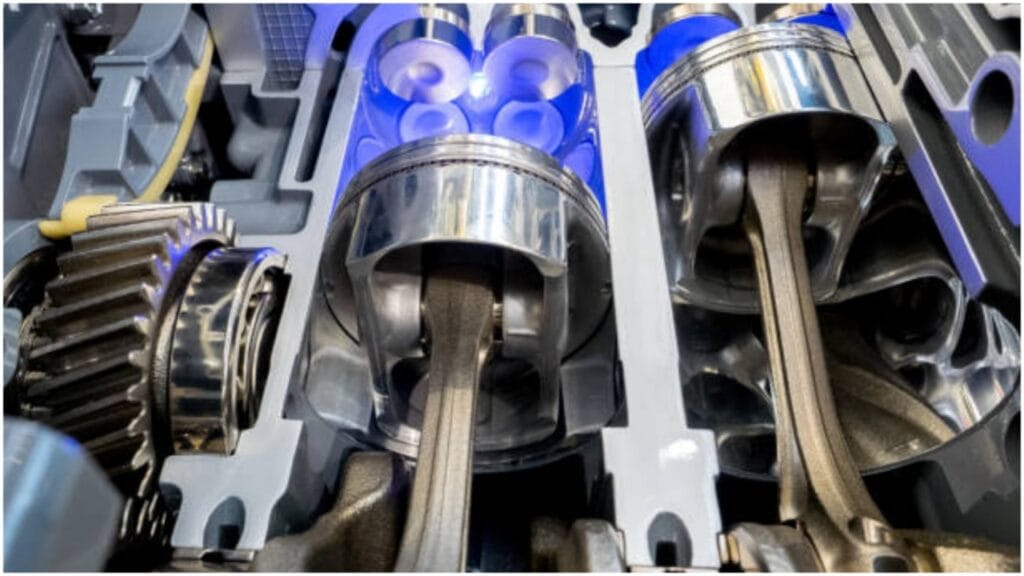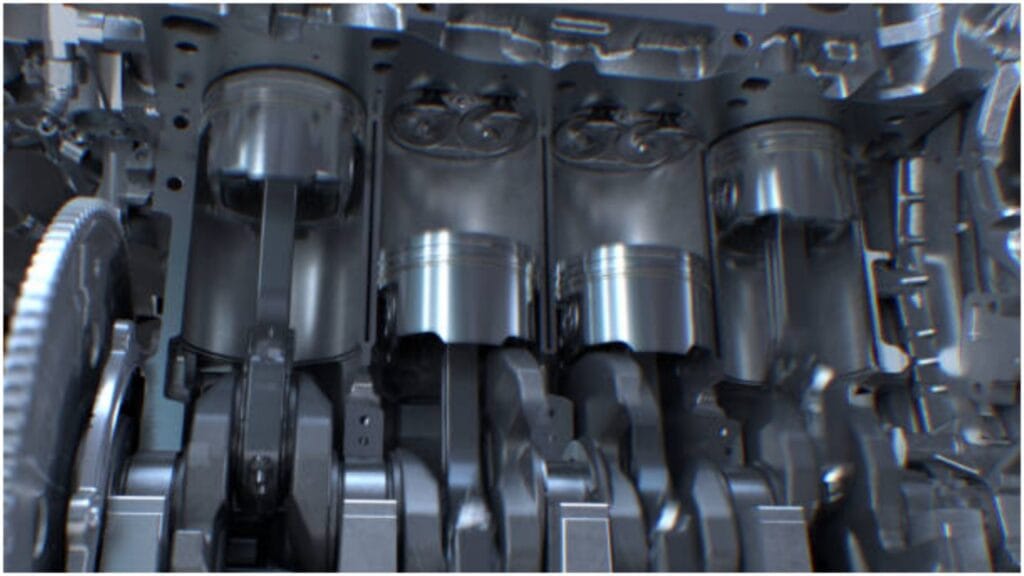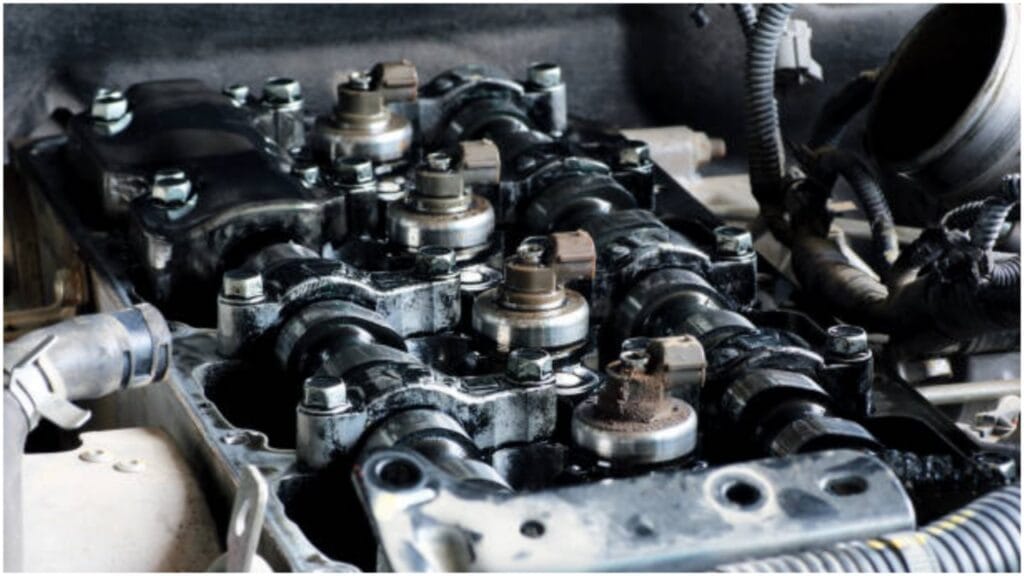A piston is the beating heart of your car’s engine. It moves up and down inside a cylinder, turning fuel into motion. This back-and-forth movement drives the crankshaft, which powers the wheels.
The piston plays a critical role in the combustion process. It compresses air and fuel, creating the pressure needed for an explosion that generates power.
How It All Starts
When you turn on the ignition, the engine begins its cycle. The piston is pulled down, drawing in air and fuel into the cylinder.
This is called the intake stroke. It’s like breathing for your engine, pulling in what it needs to start the process.
Compressing the Mixture
Once the cylinder fills, the piston moves upward. This compresses the air-fuel mix into a smaller space. Compression makes the mixture highly explosive. It’s like squeezing a spring – all that energy is ready to burst out.
The Spark and Explosion
At the top of the cylinder, a spark plug ignites the compressed mixture. The explosion forces the piston downward with immense energy.
This downward motion is the power stroke. It’s when the engine gets the push it needs to work.
Back to the Start
After the power stroke, the piston moves back up. This pushes out the exhaust gases from the burnt fuel. It’s called the exhaust stroke. The process repeats stroke after stroke, keeping your car running smoothly.
Why Pistons Are Tough
Pistons endure extreme heat and pressure. They are made from strong materials like aluminum alloys, which helps them withstand the constant explosions inside the engine. Their design is lightweight but durable, balancing speed and strength.
Rings Around the Piston
Pistons have rings around them. These rings seal the gap between the piston and the cylinder wall, keeping combustion gases in and oil out. Without these rings, the engine would lose power and efficiency.
What Happens Without Pistons?

Without pistons, your car wouldn’t move. They are central to the engine’s operation. They work silently but tirelessly, translating tiny explosions into the power that propels your vehicle.
A Piston’s Unique Shape
A piston is more than just a metal piece moving up and down. Its design is carefully crafted for efficiency. It has a cylindrical shape with a flat or slightly domed top.
This shape helps maximize the combustion process. The smooth surface ensures that the explosion energy is evenly distributed.
The Role of the Connecting Rod
The piston doesn’t work alone. It’s connected to a rod called the connecting rod. This rod links the piston to the crankshaft.
As the piston moves, the rod transfers the motion to the crankshaft. This creates the rotation that powers the car.
Pistons in Different Engines
Not all pistons are the same. Their size, shape, and material depend on the engine type. High-performance engines use lightweight pistons for speed. Diesel engines, however, need stronger pistons to handle higher pressure.
Cooling the Heat
Pistons get extremely hot during operation. To manage this, engines are designed to cool them. Oil sprays are often used to reduce their temperature. Without cooling, pistons could overheat and cause engine damage.
The Quiet Worker
Pistons are constantly moving, but you don’t hear them directly. They operate silently within the engine block.
Their precise movement ensures your engine runs smoothly. Despite the harsh environment, pistons rarely draw attention unless something goes wrong.
Pistons and Engine Performance
A piston’s condition can impact engine performance. Worn-out pistons or rings can cause power loss.
They can also lead to more oil consumption. Regular maintenance ensures pistons stay in top shape, keeping the engine efficient.
Modern Innovations in Pistons
Technology has brought advancements in piston design. Coated pistons are now standard, reducing friction inside the cylinder.
Some use advanced alloys for lighter weight and better durability. These innovations make engines more powerful and fuel-efficient.
Piston Failure Signs
If a piston fails, your car will show signs. Smoke from the exhaust, loss of power, or unusual noises could mean trouble. These symptoms should never be ignored. Early detection can save the engine from significant damage.
What does a piston do in a car?

A piston is one of the most essential parts of an engine. It sits inside the cylinder and moves up and down, creating the power to turn the crankshaft. The piston is necessary for the engine’s operation; without it, the engine couldn’t function.
Compression and Power
During the compression stroke, the piston plays a key role. It moves up inside the cylinder, compressing the air and fuel mixture.
The tighter the mixture, the more power it generates. This creates a controlled explosion that pushes the piston down. This downward motion is what powers the engine.
Creating the Power Stroke
Once the air-fuel mixture is compressed, a spark plug ignites it. This creates a small explosion that forces the piston downward.
The piston moves with great force, turning the crankshaft, which powers the car’s wheels. This is the power stroke—the moment the engine produces energy.
Exhaust Stroke
After the power stroke, the piston moves back up again. This time, its job is to push out exhaust gases from combustion.
The gases exit through the exhaust valve. This is the exhaust stroke. The engine then prepares for the next cycle to start over.
The Piston’s Constant Movement
The piston is in constant motion as the engine runs. It doesn’t rest, constantly moving up and down.
Each time it moves, it goes through the four stages of the cycle: intake, compression, power, and exhaust. This continuous process powers the car as long as the engine is running.
Efficiency and Design
Pistons are designed for efficiency. They must be lightweight yet strong and usually made from aluminum alloys.
This material helps them resist heat and wear while keeping the engine light. The piston’s smooth surface helps reduce friction, making the engine run more smoothly.
Importance of the Piston Rings
Pistons have rings around them to improve performance. These rings help seal the gap between the piston and the cylinder wall.
This seal prevents combustion gases from leaking out and keeps oil from entering the combustion chamber. Piston rings are vital for maintaining power and engine efficiency.
Cooling the Piston
Pistons get very hot during the engine’s operation. Oil cools them down to prevent overheating.
The oil spray inside the engine keeps the piston’s temperature in check. The piston could warp or seize up without proper cooling, causing major engine problems.
The Impact on Engine Performance

A well-functioning piston is key to a car’s performance. When pistons are in good condition, the engine runs efficiently.
When pistons become worn or damaged, they can cause the engine to lose power. This could lead to higher fuel consumption and poor acceleration.
Piston Failure
If a piston fails, the engine’s performance will suffer significantly. Piston failure can happen for various reasons, such as poor lubrication, excessive heat, or wear over time.
Signs of piston problems include smoke from the exhaust, a rough idle, or knocking sounds. These issues should be addressed quickly to prevent further damage.
Conclusion
The piston is a crucial component that keeps the engine running. It works with other parts to convert fuel into mechanical power.
Without it, the engine wouldn’t have the force to turn the crankshaft and move the vehicle. Pistons are designed to endure high pressure and heat, playing a constant role in the engine’s operation.

